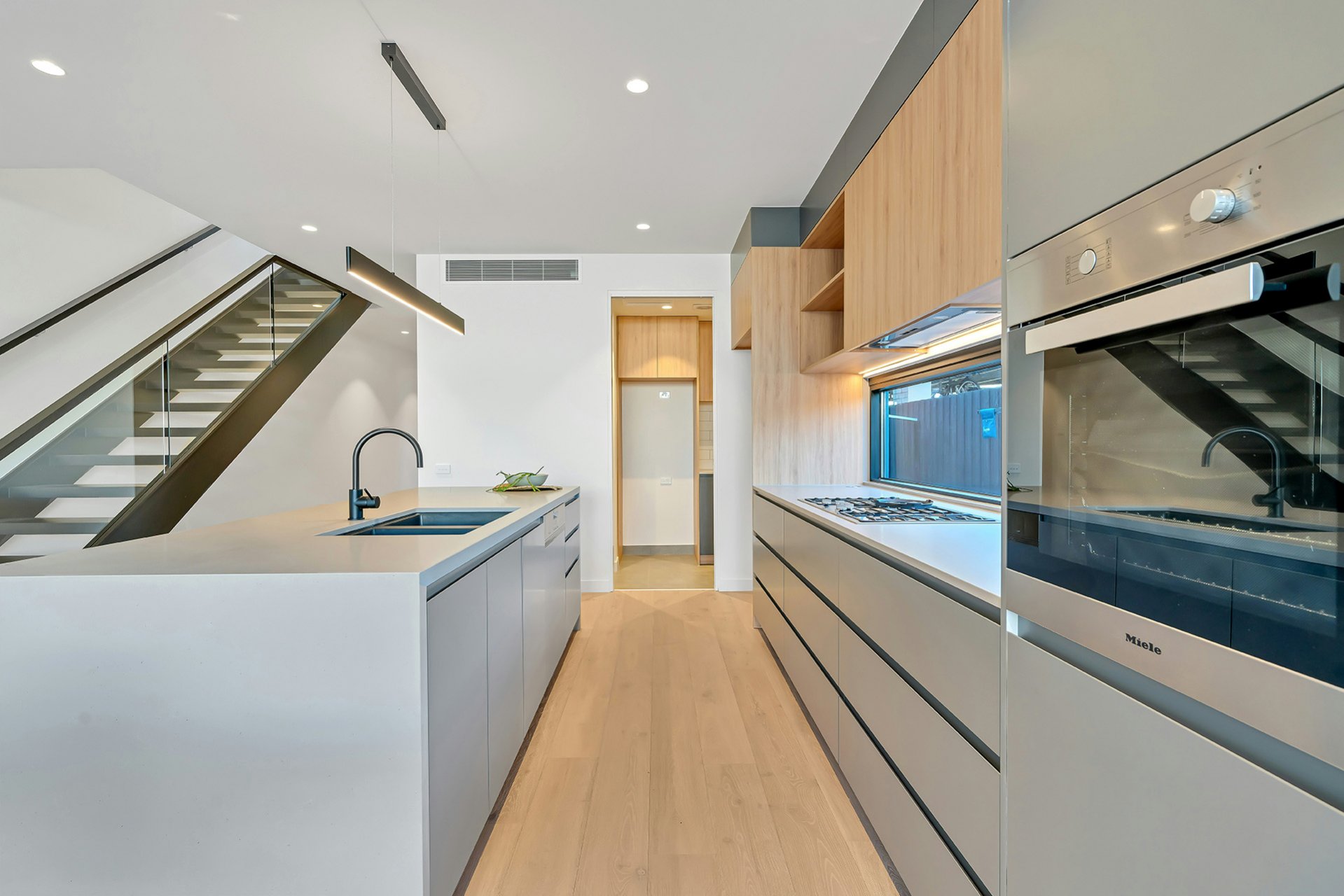Choosing your kitchen cabinets is a key decision when designing or renovating your kitchen. Cabinets set the tone for the space, both functionally and aesthetically. Here's a step-by-step guide to help you choose the right kitchen cabinets:
1. Set Your Budget
Kitchen cabinets can vary widely in price, depending on the material, style, brand and customisation. Setting a budget early will help narrow down your choices and guide you in making practical decisions. Consider the following:
Pre-made cabinets (standard sizes) are generally the most affordable.
Semi-custom cabinets allow for more flexibility in terms of size and style.
Custom cabinets are tailored to your space and style preferences but come with the highest price tag.
2. Determine Your Kitchen's Layout
Think about the functionality of your kitchen and what type of storage you need. Do you need more drawer space? Do you want upper cabinets or open shelving? Do you own a lot of heavy pots and pans or have beautiful glassware that you want to put on display?
Some standard layout styles include:
Galley: Two parallel walls, often best with simple, straight cabinetry.
L-Shaped: Cabinets on two adjacent walls, with corner storage solutions.
U-Shaped: Cabinets wrap around three walls for maximum storage.
Island Layout: Adds central cabinet storage for food prep or extra seating.

3. Choose the Cabinet Material
The material of the cabinet will influence both its durability and appearance.
Solid Wood (e.g., oak, maple, cherry): Offers high quality and is highly customisable, but it can be expensive.
Plywood: More durable than particleboard, but still more affordable than solid wood.
MDF (Medium-Density Fiber board): Smooth surface ideal for painted finishes, but less durable than wood.
Particleboard: Often used in budget-friendly, mass-produced cabinets, but less durable.
Laminate: Affordable, easy to clean and available in many colours and patterns, but not as durable as wood.
4. Choose the Cabinet Style
Cabinet style contributes to the overall aesthetic of your kitchen. Common cabinet styles include:
Shaker: A simple, clean, and classic style with a recessed panel.
Traditional: Features more intricate details, like raised panels and ornate moulding.
Modern/Contemporary: Sleek, with flat panels and minimal detailing.
Transitional: A blend of traditional and modern elements.
Rustic/Farmhouse: Features natural wood finishes and distressed detailing.
5. Decide on Cabinet Finish
The finish you choose will impact the kitchen's look and how easy the cabinets are to maintain.
Painted Finish: Provides a smooth, uniform colour and modern look.
Stained Finish: Shows off the wood grain and provides a more classic, natural look.
Glazed Finish: Adds depth and character with a hint of colour applied over the base coat.
Matte, Satin or Glossy: Consider your preference for sheen and how it will affect cleaning and durability.
6. Consider Storage Features
Think about how you want your kitchen to function. Incorporating smart storage solutions can maximise your space:
Pull-out shelves: Makes items in deep cabinets easier to access.
Lazy Susans: Ideal for corner cabinets to make use of hard-to-reach spaces.
Soft-close doors/drawers: Reduce wear and tear and provide a quieter, more refined opening/ closing experience.
Pull-out and recycling bins: Keeps waste neatly tucked away.
Spice racks, tray dividers and built-in organisers: These add convenience and keep everything in its place.
7. Choose Cabinet Hardware
Hardware can make a big difference in the overall look of your cabinets. Some options include:
Handles: Long, sleek handles are popular in modern kitchens, while ornate handles fit more traditional designs.
Knobs: Smaller and simple, they work well with many cabinet styles.
Finish: Choose finishes that complement your cabinet colour and overall kitchen aesthetic – brushed nickel, matte black, brass and chrome are popular choices.
Handless: Handle less kitchen cabinets are a common trend in modern kitchen design and create a sleek aesthetic with practical functionality. These are generally more expensive.
8. Consider Cabinet Colour
The colour of your cabinets will set the tone for your kitchen. Here are a few ideas:
White: Classic, clean and brightens up smaller spaces.
Grey: Modern and neutral, pairs well with almost any accent colour.
Blue: Adds a bit of bold colour without being too overwhelming.
Wood Tones: Rich, natural wood can add warmth, and works well in traditional or rustic kitchens.
Black: Sophisticated and dramatic, works well in modern or contemporary designs.
9. Think about Lighting
Consider how your cabinets will look under different lighting conditions. If you have under-cabinet lighting, it will illuminate the lower part of your cabinets, so choose materials that reflect light or allow it to shine through. Light-coloured cabinets work well in this scenario, but some darker finishes (like matte black or navy) can look stunning with the right lighting.
10. Get Expert Help
If you're unsure about what will work best for your kitchen, consult with a kitchen designer or a contractor. They can help you make informed decisions based on your space, needs and budget.
11. Order Samples or Visit Showrooms
It's always a good idea to get a sample or visit a showroom to see the materials, finishes, and hardware in person. This allows you to better visualise how the cabinets will look in your space.
By considering these factors, you can choose kitchen cabinets that will both elevate the style of your kitchen and provide the functionality you need for cooking and storage. And lastly, don't forget to enjoy the process!